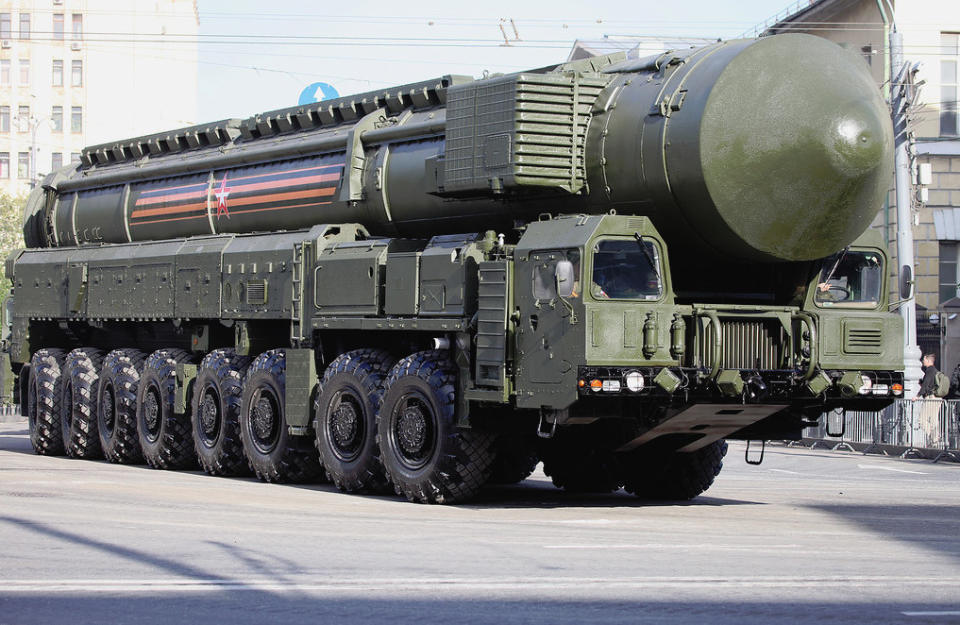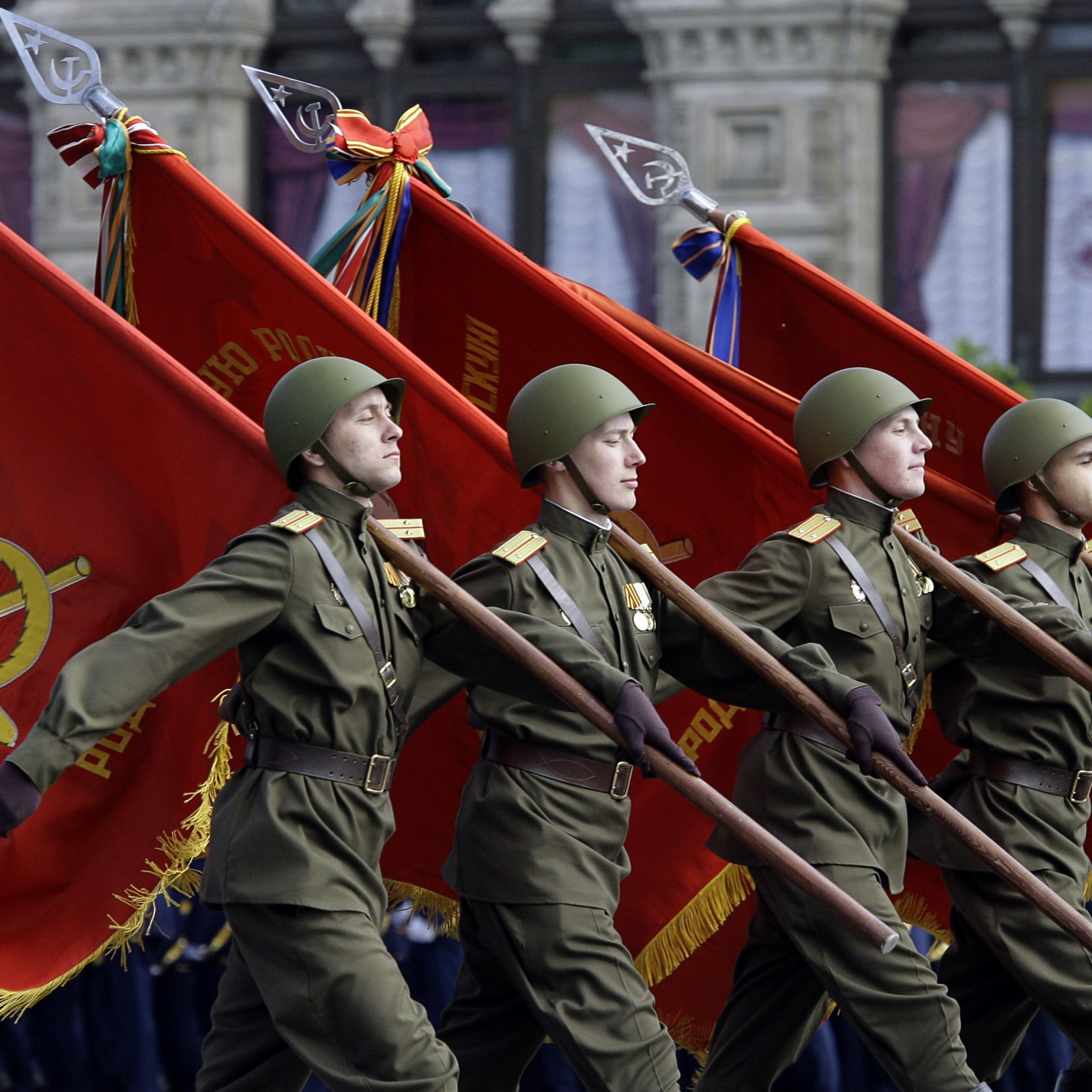On December 8, 1987, Mikhal Gorbachev and Ronald Reagan signed the Intermediate-Range Nuclear Forces (INF) treaty, which banned the United States, the Soviet Union, and the Soviet Union’s successor state, the Russian Federation from developing, producing, fielding, or using any ground-launched missiles of the Medium-Range Ballistic Missile (MRBM) and Intermediate-Range Ballistic Missile (IRBM) categories, which have ranges of 500-1000 km and 1000-5500 km, respectively as defined by the treaty, and all cruise missiles with such ranges1. On October 20, 2018, the United States would announce its unilateral withdrawal from the INF citing alleged violations by the Russian Federation, specifically, their development of the RS-26 Rubezh ICBM, which is a shortened version of the RS-24 Yars that had one stage removed in order for it to be short enough to be launchable from a truck. RS-26 was first successfully rested in 2012, where it hit a target 5800 km away, just barely confirming its status as an Intercontinental Ballistic Missile (ICBM) by 300 km. However, RS-26’s true maximum range remains unknown.

Knowledge of the RS-26’s capabilities had been known by the United States government for over six years before the US finally decided to nullify the INF treaty. National Security Advisor John Bolton would tell of the US’s actual reason for withdrawing from the INF two days later in an interview with Elena Chernenko from Kommersant News when he said: “And, in reality, we see China, Iran, North Korea all developing capabilities which would violate the treaty if they were parties to it. So the possibility that could have existed fifteen years ago to enlarge the treaty and make it universal today just simply was not practical.”2 Ironically, it was none other than Vladimir Putin who had first suggested expanding the INF to include China and other countries back in February of 2007 at the Munich Security Conference, due to rising concerns over China’s developing stockpile of IRBMs. The Russians would likewise attempt to revive the treaty on October 26, 2018, by calling for a vote to get the United Nations General Assembly to consider calling on Washington to preserve and strengthen the treaty, which failed to get any traction. Thus, the INF was well and truly dead.
Three and a half years later, the United States and several other countries in NATO would begin accusing Russia and the DPRK of covertly deploying Korean ground forces to Russia’s Kursk Oblast following the failure of a Ukrainian offensive intended to seize Kursk Nuclear Power Plant in order to use it to blackmail Russia into agreeing to negotiations. The US and its allies have continuously failed to present any evidence of this for nearly two months, but US President Joe Biden allegedly used these allegations as a pretext to allow Ukraine to strike parts of Russia’s prewar territory with missiles supplied by NATO countries, according to Ukrainian and western media. Ukraine then launched several Storm Shadow and several ATACMS missiles at alleged Korean command centers in Bryansk Oblast, instead of the alleged Korean troop formations in Kursk that were supposedly helping Russian VDV divisions shrink the remaining Ukrainian-held salient in Kursk. While the missiles failed to do any significant damage thanks to the efforts of Russian air defense crews, one of Russia’s red lines had just been crossed.
The Russian response was predictably harsh and swift, as the Russians would launch up to six brand new, never before seen Oreshnik IRBMs with conventional warheads at the Yuzhmash missile factory in Dnepropetrovsk, later in the same night as Ukraine’s strike.3 The Oreshniks had been launched some 3000 km away in Astrakhan Oblast, according to Ukrainian and NATO radars, which would place it comfortably within the ranges for IRBMs set by the INF treaty. Initial reports from before the missile was identified as Oreshnik reported that an ICBM had been launched at Dnepropetrovsk, but Ukrainian radar readings that estimated the speed of the impacting warheads in their terminal phase at well over Mach 11, and basic velocity calculations knowing that the warheads take two seconds to fall from the clouds to the ground with the assumption that the clouds are only 2 km above the ground placing their terminal stage velocity at approximately Mach 12, immediately disqualify them as ICBM warheads, as Russian RS-24 and RS-26 ICBM Multiple Independently targetable Reentry Vehicles (MIRVs) are known to impact at speeds in excess of Mach 20. However, high-hypersonic speeds of lust above Mach 10 are within the expected range for relatively slower IRBM impacts.
Western media have claimed that the Oreshnik is based on the RS-26 without any evidence or explanation beyond the fact that Oreshnik is almost certainly launched from a truck. The most that Russian officials have said so far about Oreshnik is that it is, indeed an IRBM, and that it is a new missile design not based on any Soviet missile systems. However, there are indeed some actual similarities to RS-26, such as Oreshnik’s use of six MIRVs/MaRVs, while RS-26 is known to use four MIRVs as one of its standard configurations. However, this similarity of design is likely due to the Russians designing Oreshnik within old design conventions that have persisted since the Cold War, as the Soviet-Era RSD-10 Pioneer used three MIRVs for its payload. If Oreshnik is assumed to have a similar maximum payload weight of the RS-26 in its nuclear configuration of 800 kg, then the sets of six MIRVs seen impacting Dnepropetrovsk would weigh approximately 130 kg each. Thus, if the Oreshniks were launched with empty MIRVs or MIRVs with dummy warheads as has been alleged by some analysts, the raw kinetic energy alone would give each MIRV a similar amount of energy as the blast yield of a FAB-500 high-explosive bomb. However, if Oreshnik is as similar to RS-26 as western media outlets allege, then its status as an IRBM could allow for it to carry a larger and heavier warhead at the cost of range and speed, as the RS-26 is limited to just 800 kg solely in order to maintain its status as an ICBM. Some have theorized that only one Oreshnik was launched containing six MIRVs that in turn deployed six submunitions each for thirty-six submunitions total, which would imply that Oreshnik has a radically different design from any ground-launched missile yet fielded by any army, with it being most similar to the Russian R-30 Bulava Submarine-Launched Ballistic Missile. The only evidence to support this theory is the conspicuously clean, hazelnut tree flower-shaped (hence the name Oreshnik) contrails of the warheads/submunitions as they fly through the atmosphere, which implies an extremely high, bullet-like ballistic coefficient uncharacteristic of MIRVs, which usually produce a distinctly visible “wake” of ablating superheated material.
Regardless of the exact specifications of Oreshnik, the specter of imminent nuclear annihilation has returned to Europe as IRBMs were the weapon of choice by both NATO and the Warsaw Pact for nuclear exchange in Europe due to their faster flight times and lower ballistic arcs making them very difficult to intercept even with dedicated Anti-Ballistic Missiles. The consequences of the west’s constant escalations and provocations against Russia have been made clear, and are likely only just getting started.

- II.C.36 Treaty between the United States of America and the Union of Soviet Socialist republics on the elimination of their intermediate-range and shorter-range missiles 1987 ↩︎
- APNSA John Bolton Interview with Elena Chernenko, Kommersant 2018
↩︎ - What we know about Russia’s new Oreshnik Missile 2024 ↩︎
Sources:
II.C.36 Treaty between the United States of America and the Union of Soviet Socialist republics on the elimination of their intermediate-range and shorter-range missiles. (1987). International Law & World Order: Weston’s & Carlson’s Basic Documents. https://doi.org/10.1163/2211-4394_ilwo_com_031623
APNSA John Bolton Interview with Elena Chernenko, Kommersant. U.S. Embassy and Consulates in Russia . (2018, October 22). https://ru.usembassy.gov/apnsa-john-bolton-interview-with-kommersant/
What we know about Russia’s new Oreshnik Missile. RT International. (2024, November 22). https://www.rt.com/russia/608078-oreshnik-all-we-know/
Written by Thermal, edited by Seraph





